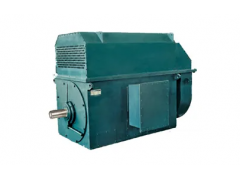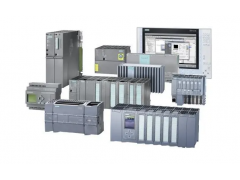
Thanks to today's technological advancements, the healthcare industry is rapidly going digital. Reducing human errors and improving operational efficiency are important factors driving the digitalization process, and the establishment of electronic health records (EHR) is the first task of this process. In addition, the new crown epidemic has increasingly highlighted the importance of electronic health records-helping medical staff to easily receive patient information in real time and improve work efficiency.
However, developing electronic health records requires the collection of large amounts of data from medical machines scattered across various departments in a hospital. Therefore, many hospitals are developing hospital information systems (HIS) to collect data from these medical machines all over the place, and then convert valuable data into electronic health records. Since many medical machines have serial ports, it is necessary to rely on serial-to-Ethernet communication to build a modern HIS system. These medical machines include dialysis machines, blood glucose and blood pressure monitoring systems, medical carts, mobile diagnostic workstations, ventilators, anesthesia machines, electrocardiogram machines, etc. Therefore, it is crucial to develop a reliable communication system that connects the HIS system and the medical machine. If the connection is unreliable, the HIS system will not be able to receive accurate data in time to generate qualified electronic health records, resulting in poor diagnosis and delayed treatment, which defeats the original intention of developing electronic health records. Serial device servers can play a key role in data transmission between serial-based medical machines and Ethernet-based HIS systems, so choosing a reliable serial device server is crucial to building a stable connection. In this article, we'll discuss three factors that are worth noting when developing a HIS system using connectivity solutions, and how these solutions can help.
Consideration 1: Solving the challenge of connecting to mobile medical machines
Many medical machines need to move constantly in the ward to serve different patients. Wireless communication can solve the connection problem of these mobile medical machines. Therefore, the mobile medical machine can be connected to the HIS system via a wireless network by using a serial port device networking server that supports wireless connection. While this solution is convenient, it can be difficult to maintain a stable wireless connection. If you choose to build a wireless network, you need to deploy a sufficient number of APs in the hospital so that the medical machines can always stay connected when they move around. When the medical machine moves between different APs, the serial port to wireless device networking server needs to roam quickly between APs, shorten the switching time, and avoid connection interruption as much as possible. once the wireless connection is disconnected or unstable, the port buffer function can ensure that the serial port data is stored in time, and the data will be resent when the wireless connection is restored, successfully completing the serial port to wireless communication. Therefore, when choosing a serial port to wireless device networking server, it is necessary to check whether it has this function, so as to ensure that the HIS system completely collects the serial port data of medical devices.
Consideration 2: Prevent unauthorized access and protect sensitive patient information
Building a data communication system can improve efficiency, but various security issues also come with it. The serial port data of the hospital contains sensitive patient information and needs to be properly protected. Therefore, when choosing a serial port to wireless device networking server, it is necessary to ensure that the data is fully protected during wireless transmission. This requires the device networking server to support the WPA2 protocol to establish a secure wireless connection and encrypt the serial port data transmitted wirelessly. In addition, the serial port to wireless device networking server also needs to support secure boot, allowing only authorized firmware to run on the device, minimizing the risk of hacker attacks.
Consideration 3: Protecting Communications Systems from Interference
Medical machines should be operated with as little interruption as possible. Therefore, the serial port to wireless device networking server should be stable enough to minimize system downtime. The device networking server should adopt the key design of locking screws to prevent the medical cart from being interrupted due to constant vibration and impact during the movement of the power input. Additionally, features such as surge protection for serial ports, power input and LAN ports enhance reliability and reduce system downtime.
Serial port to wireless device networking server that meets safety and reliability requirements
Moxa's NPort W2150A-W4/W2250A-W4 series serial-to-wireless device servers provide safe and reliable serial-to-wireless communication for your HIS system. The series provides 802.11 a/b/g/n dual-band network connectivity, ensuring easy connection of serial-based medical machines with modern HIS systems. In order to reduce packet loss in wireless network transmission, Moxa's serial port to wireless device networking server supports fast roaming function, enabling the mobile medical vehicle to realize seamless connection between different wireless APs. Additionally, offline port buffering provides up to 20MB of data storage during unstable wireless connections. In order to protect patients' sensitive information, Moxa's serial port to wireless device networking server supports secure boot and WPA2 protocol, which comprehensively strengthens device security and wireless transmission security.
As a provider of industrial connectivity solutions, Moxa has designed screw-locking power terminals for this series of serial-to-wireless device servers to ensure uninterrupted power input and surge protection, thereby improving device stability and reducing system downtime.

NPort W2150A-W4/W2250A-W4 Series Serial to Wireless Device Servers
Connect serial devices and Ethernet devices to IEEE 802.11a/b/g/n networks
Web-based configuration via built-in Ethernet LAN or wireless WLAN
With secure boot function (Secure Boot), only Moxa-authorized firmware can run
WEP, WPA, WPA2 provide secure data access
Fast roaming function, automatic fast switch access point (AP)
Offline port buffer and serial port data log function
Enhanced surge protection for serial ports, Ethernet ports, and power supplies
Dual power input (1 screw type power connector, 1 terminal block)
5-year warranty guarantees product life and quality
Moxa is committed to providing serial connection solutions to help your serial devices easily integrate into future networks. We will continue to develop new technologies, support various operating system drivers, and enhance network security features to make serial connections usable into 2030 and beyond. Learn more about Moxa's serial connectivity solutions.





